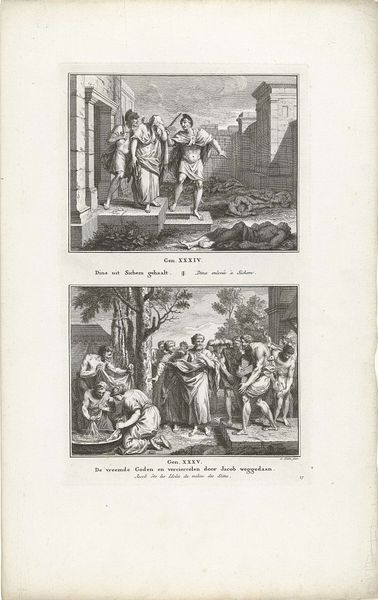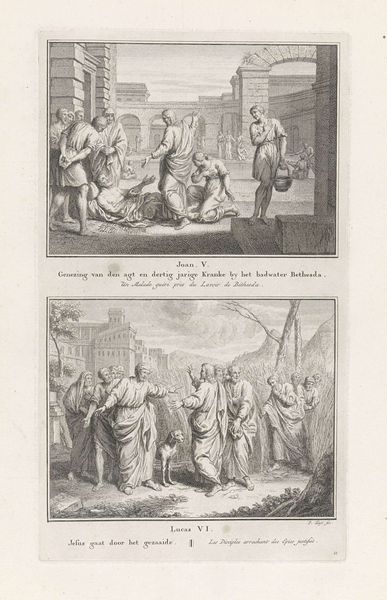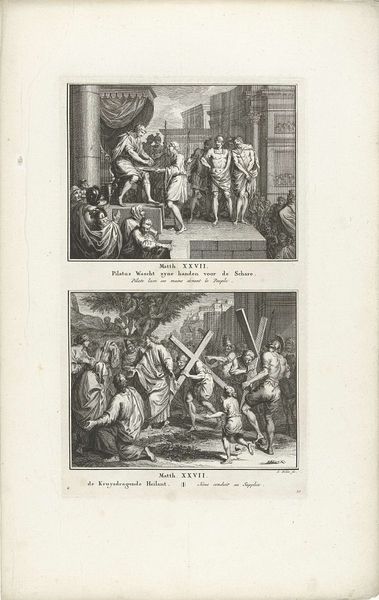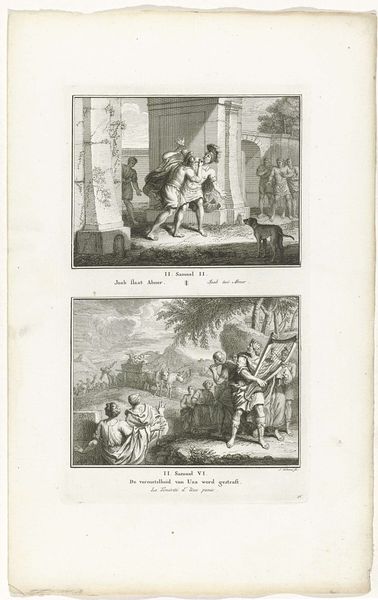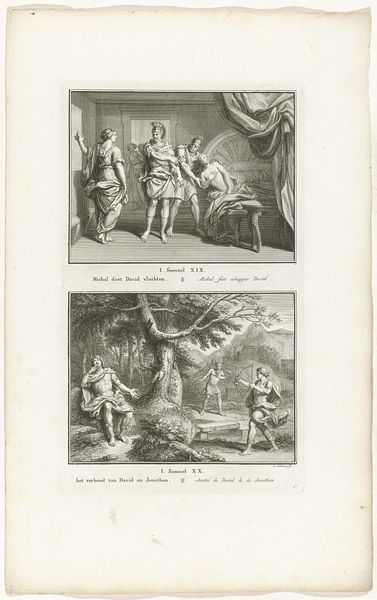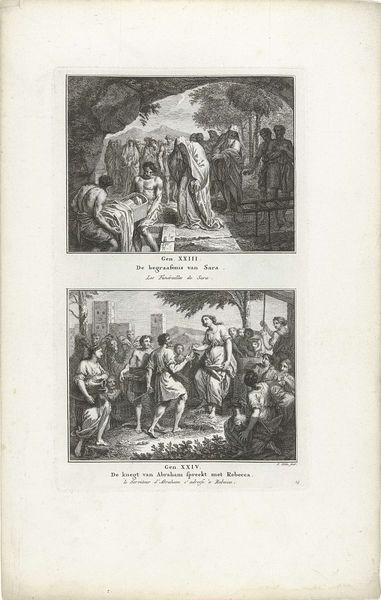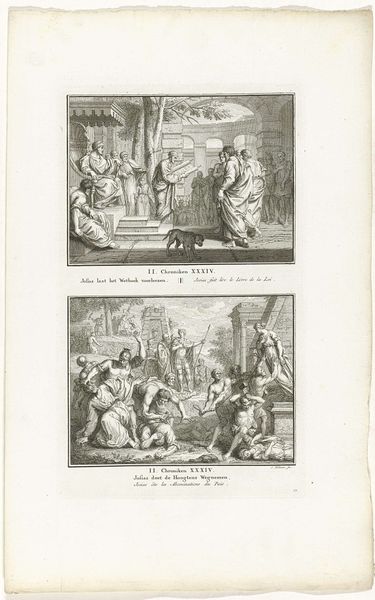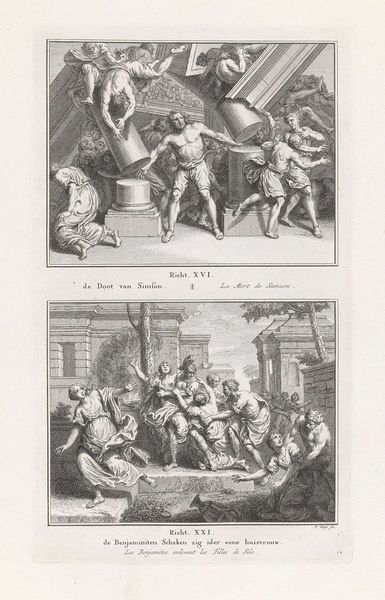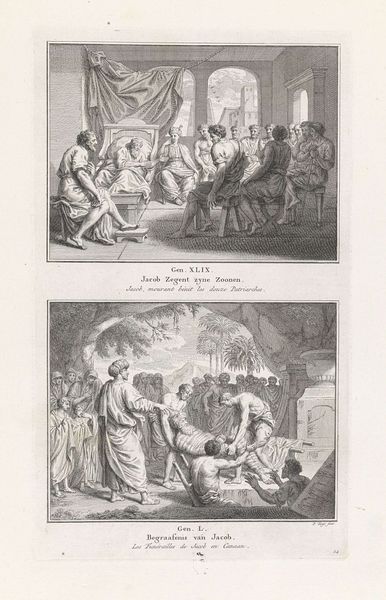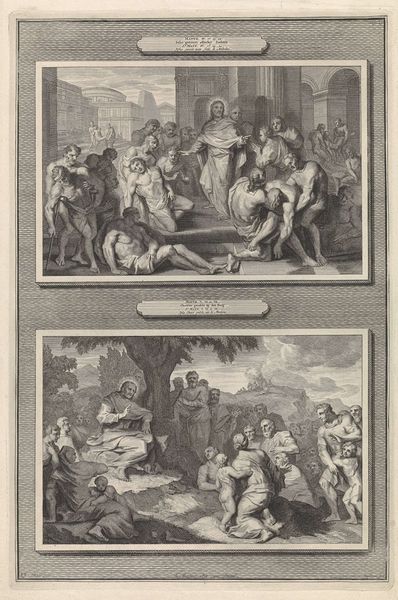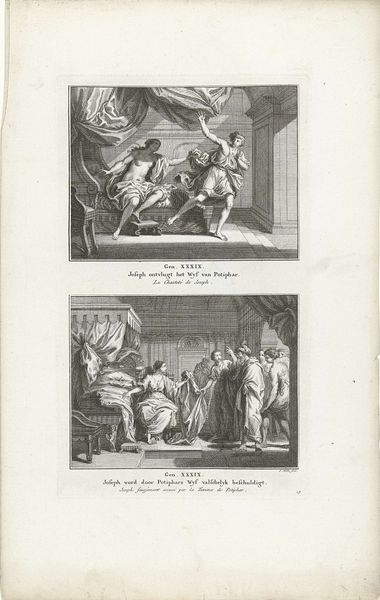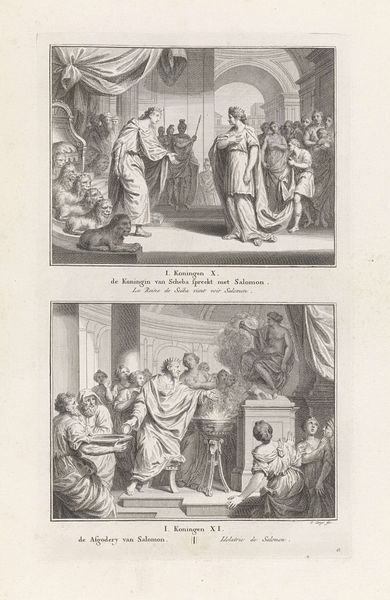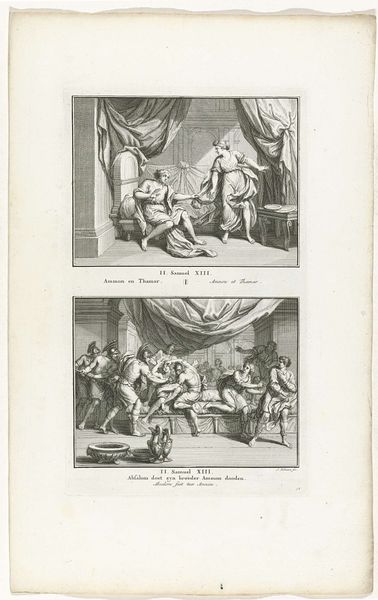
Gelijkenis van de talenten / Gelijkenis van de wijze en dwaze maagden 1716 - 1791
0:00
0:00
print, engraving
#
narrative-art
#
baroque
# print
#
old engraving style
#
history-painting
#
engraving
Dimensions: height 322 mm, width 189 mm
Copyright: Rijks Museum: Open Domain
Curator: Immediately striking, isn’t it? A double dose of parable – that sense of two worlds neatly stacked. There's a certain crispness, too, despite being nearly three centuries old. Editor: I find it almost mournful. The greyscale certainly lends a somber feel. Is that typical of Tanjé’s other works? I believe we’re looking at Pieter Tanjé's "Gelijkenis van de talenten / Gelijkenis van de wijze en dwaze maagden" currently housed here at the Rijksmuseum. Its creation dates roughly from 1716 to 1791, an engraving that masterfully embodies the themes of diligence and its counterpart. Curator: His process, of course, is the engraving. Lines, precise cuts that, when printed, convey form, light, and shadow, mass production made accessible. Tell me more about how that medium informs the narrative here. How the material realities affect the piece. Editor: Well, given that we are seeing two separate biblical scenes conjoined, this format perhaps speaks to a societal eagerness to contrast behaviors, no? The industrious servants rewarded above, the neglectful maidens in a languid slumber below – each a mirror reflecting potential choices. Morality through mass consumption, maybe? Curator: It's tempting to see that didactic intention and assign moral weight, yes. The parable being a crucial medium of education, its message accessible via widely available engravings is potent, an artistic version of the printing press changing society’s perception. But can we disentangle the consumption and the context of labor itself in 18th-century Netherlands? Tanjé himself, a skilled laborer… Editor: Yes, there’s an artistry even in his means to communicate moral instruction. The way each figure has been rendered, those fine details of fabric... there’s care taken despite its readily-accessible form. Maybe this serves as a gentle reminder about potential beyond mere economics, about taking responsibility for the resources and gifts, so to speak, presented before us. Curator: Indeed, Tanjé’s engagement allows for continued inquiry, no? Even now. And it’s a joy to think he invites continued examination of labor, class, value through these tales immortalized in ink. Editor: Definitely. I think I appreciate its nuanced visuality much more now. A simple seeming medium delivers deeper complexity.
Comments
No comments
Be the first to comment and join the conversation on the ultimate creative platform.

